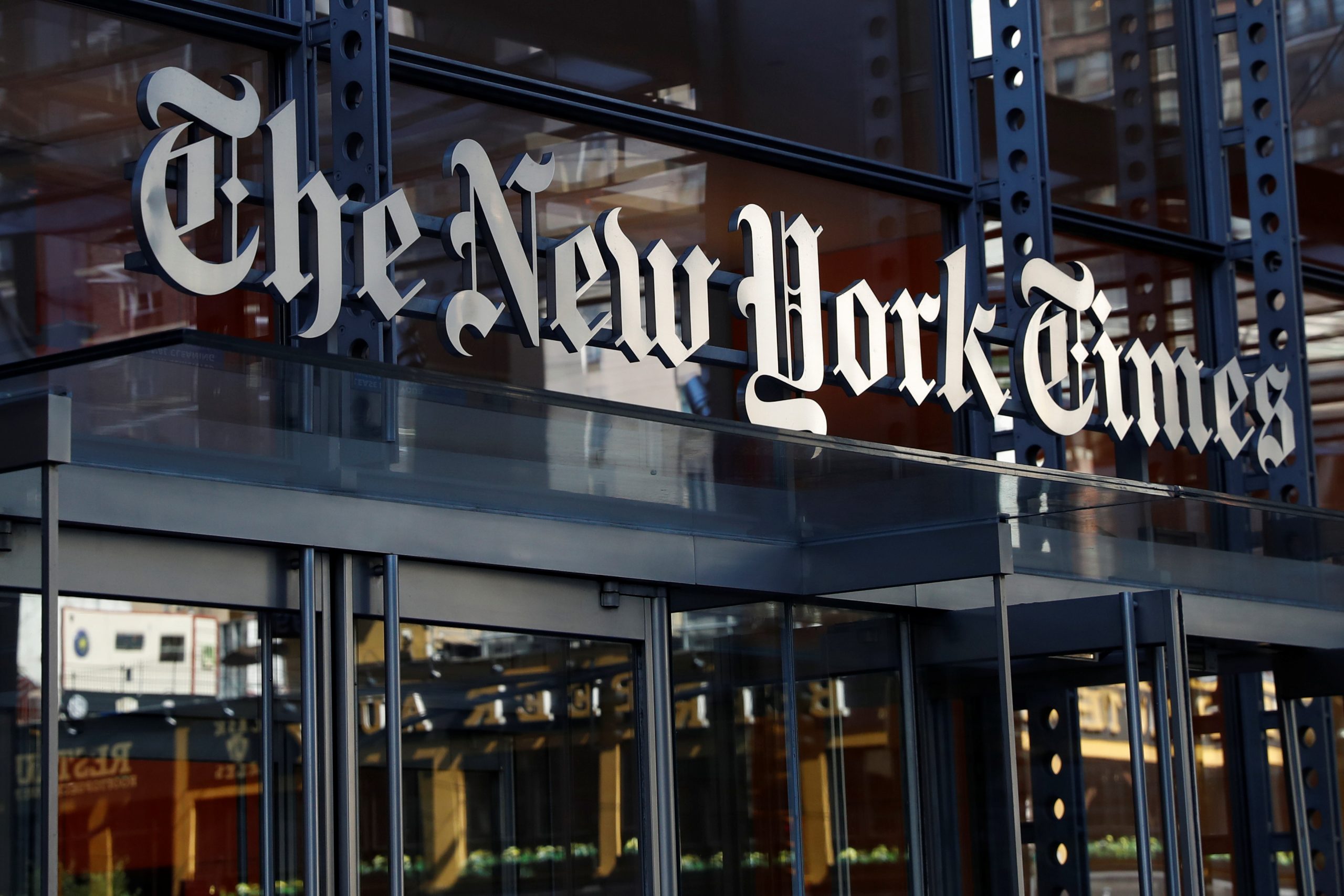Claiming the American flag needs to be revised to represent a nation different from the one The New York Times thinks it ought to be, the paper has offered some new ideas that focus more on racism than patriotism.
Although a look at flags from the early decades of the United States’ existence shows that the traditional American flag of white stars on a blue field with alternating red and white stripes has always been the standard, even during the years when stripes were added for new states, the Times claimed the flag’s designed “shifted frequently until the early 1900s.”
That bit of fact dispensed with, the paper offered six alternative designs.
In Andrew Kuo’s design, red white and blue make it onto the flag, but a massive yellow square takes up one-quarter of the flag as a nod to “repairing systemic racism.”
Another quarter of the flag is green to represent “taking care of our planet.”
Kuo said his design “acknowledges the emotions that informed where our country has been and the spirit of where it may go, with joy and forgiveness as possibilities. We can’t ignore how we got here, but maybe we can move toward a different, even better place.”
The design from 2×4 is a fuzzy version of the current color scheme. The designers argued that “the American flag has been made and remade, evolving from a unifying emblem into a complex and contested vocabulary of symbols.”
“In this flag, the familiar symbolism falls out of focus, giving way to something ambiguous, vague and difficult to define,” they wrote.
Designer Na Kim had no problem defining what he wanted, putting white stars on a pale gray background.
“The colors of our flag are intended to stand for unity, valor and justice. The gray, monochrome flag represents America surrendering to its fall from power and loss of the ideals it once stood for. The American dream is being washed away,” she wrote.
Some of the designs tried a variation on the flag’s theme, but Hank Willis Thomas decided to throw Black Lives Matter into his design, along with a reference to the song “Lift Every Voice and Sing,” which is hailed as the “black national anthem.” Traces of the yellow Gadsden flag with its “Don’t Tread on Me” motto also made it into his design.
Jiminie Ha and With Projects Inc. designed a flag as a digital design whose colors “would be determined by relevant, collected data and would transform over a given period. The radiating shapes suggest the country’s growth or decline within these parameters.”
Joseph Han, Tom Elia and J.A. Ginsburg, Collins, decided that nothing makes a flag better than purple.
“The American flag was once a unifying symbol; its red, white and blue belonged to everyone. But now, red and blue are tribal signals, and the flag seems to represent two factions forced to share a piece of fabric. By running a single purple bar across the middle, this flag reminds all of us of the constant potential and possibility inherent in America when red and blue come together as one,” the designers wrote.
The American flag has been a target of liberals before. In June, singer Macy Gray attacked the current flag and called for a replacement.
“The Confederate battle flag, which was crafted as a symbol of opposition to the abolishment of slavery, is just recently tired. We don’t see it much anymore. However, on the 6th, when the stormers rained on the nation’s most precious hut, waving Old Glory — the memo was received: the American flag is its replacement,” Gray wrote in an Op-Ed for MarketWatch, referring to the presence of American flags during the Jan. 6 incursion into the U.S. Capitol.
According to Gray, Old Glory “no longer represents democracy and freedom. It no longer represents ALL of us. It’s not fair to be forced to honor it. It’s time for a new flag.”
Gray claimed racism is the only reason there are only 50 states.
“Let’s look to the stars. There are 50, where there should be 52. D.C. and Puerto Rico have been lobbying for statehood for decades. Both have been denied, since statehood would allow each territory’s elected officials seats in the house,” she wrote.
Gray then offered her vision of a flag.
“What if the stripes were OFF-white? What if there were 52 stars to include D.C. and Puerto Rico? What if the stars were the colors of ALL of us — your skin tone and mine — like the melanin scale? The blue square represents vigilance and perseverance; and the red stripes stand for valor. America is all of those things. So, what if those elements on the flag remained? What if the flag looked like this?” she wrote.
This article appeared originally on The Western Journal.

























 Continue with Google
Continue with Google